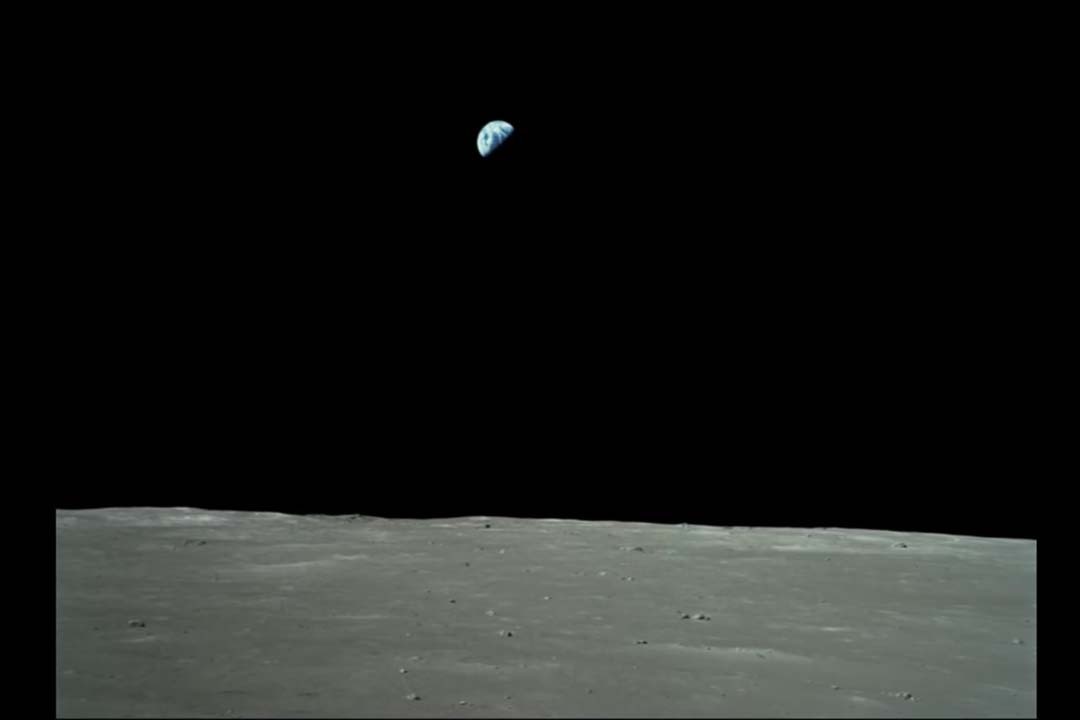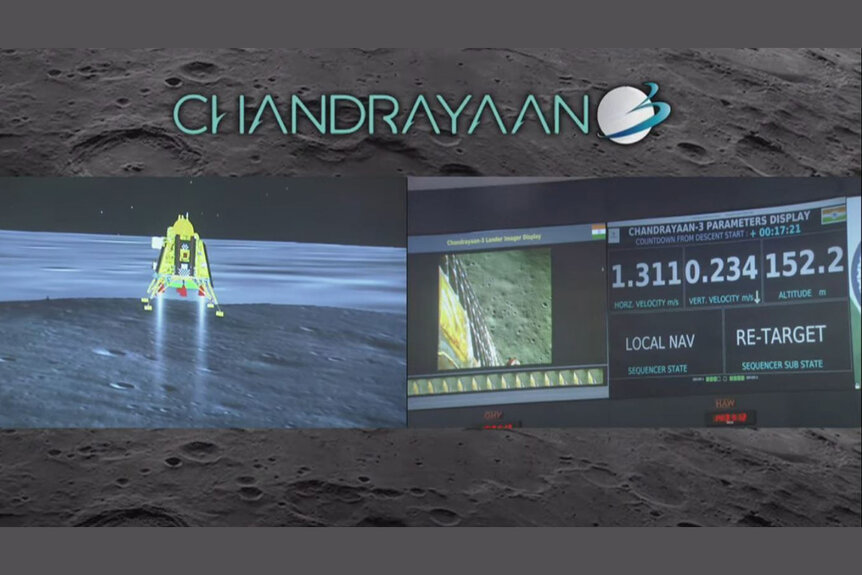Create a free profile to get unlimited access to exclusive videos, sweepstakes, and more!
India's Chandrayaan-3 Successfully Lands on the Moon's South Pole
India becomes the fourth nation to soft land on the Moon and the first to explore the South Pole.

In December of 1968, three people — Frank Borman, Bill Anders, and Jim Lovell — strapped themselves inside a small spacecraft and flew themselves to the Moon. They were the first to leave low-Earth orbit, the first to travel a quarter million miles from home and glimpse the dusky desolation of the Moon. You can see the mission for yourself in First to the Moon, streaming now on Peacock!
The United States may be the only nation to have landed humans on the Moon (so far!) but a few others have landed spacecraft. Before the morning of August 23, only three nations had successfully achieved a soft landing on the Moon: the Soviet Union, the United States, and China. Now, India has joined that proud legacy by becoming the fourth nation to soft land a spacecraft on the Moon, and the first to visit the lunar South Pole.
India’s Chandrayaan-3 Lunar Landing Mission
The mission began more than a month ago but culminated in a livestream watched by more than 7 million people. Viewers saw a split view showing the lander’s status in real time, Prime Minister Narenda Modi watching remotely from an official meeting in South Africa, and a white-knuckled mission control.
RELATED: Russia’s Luna-25 Moon Lander Lost Contact, Crashed Into the Moon
A couple kilometers above the Moon’s surface, the engines fired to slow the lander’s descent nearly to a standstill. Chandrayaan-3 hovered momentarily then began its descent. A camera outside the lander sent back still images every second or so, revealing the Moon’s slowly approaching surface. As the altitude ticked to zero, the room erupted in cheering and celebration and Chandrayaan-3 touched down near the lunar South Pole.
S. Somanath, director of the Indian Space Research Organization (ISRO) approached the lectern for a brief and celebratory remark, “We have achieved soft landing on the Moon. India is on the Moon!” Somanath then called on Prime Minister Modi to speak. Modi addressed the gathered crowed, and the world, first in Hindi, then in English.
“Friends, on this glorious occasion I would like to address all the people of the world, the people of every country and region. India’s successful Moon mission is not just India’s alone. This is a year in which the world is witnessing India G20 presidency. Our approach of one Earth, one family, one future is resonating across the globe. This human centric approach that we present and that we represent has been welcome universally. Our Moon mission is also built on the same human centric approach.
Therefore, this success belongs to all of humanity. And it will help Moon missions by other countries in the future. I am confident that all countries in the world including those from the global south are capable of achieving such feats. We can all aspire for the Moon and beyond,” Modi said.
India’s Long Road to the Moon
The success of Chandrayaan-3 marks a potential turning point for the ISRO, which has historically operated on a shoestring budget, not that it’s hindered them much. The landing comes just days after the crash of Luna-25, Russia’s first Moon mission in half a century, and months after the crash of Japan’s Hakuto-R.
RELATED: World’s First Private Lunar Lander Is Missing, Presumed Dead
Chandrayaan-3 launched July 14 from Satish Dhawan Space Centre and it took the scenic route to the Moon over the course of more than a month. Hopes were high that this mission would succeed where Chandrayaan-2 failed. The prior mission launched July 22, 2019, and ended when the lander lost communication and created a new crater on the Moon.
Landing was the mission’s first critical objective. Even failures provide useful information which can be used for future missions, as evidenced by the course correct and success after Chandrayaan-2. Landing, of course, is preferable. Now the lander’s rover, dubbed Pragyan, will get to roving.
Pragyan’s first job is to kick the tires and test out its functionality, then it will explore the area around the landing site. The 56 kilogram rover has a range of about 500 meters and is equipped with a number of scientific instruments. If all goes well, Pragyan will test the composition of lunar regolith (Moon dirt) near the Moon’s South Pole, search for water, and study the history and evolution of the Moon’s atmosphere, such as it is.
Regardless of the future, Prime Minister Modi’s words ring true. We can all aspire for the Moon and beyond.
Brush up on your space travel history with First to the Moon, streaming on Peacock!



























